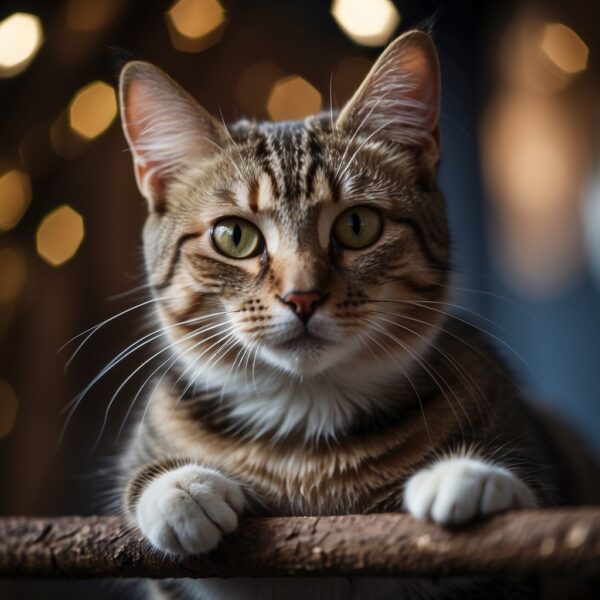
Cat Vestibular System: Understanding cat Balance
The vestibular system in cats is an essential component for maintaining balance and coordinating movement. This complex network involves the inner ear and brain, working together to process sensory information that controls the sense of equilibrium. In cats, as in other animals, the vestibular system is divided anatomically and functionally into central and peripheral segments, each with an important role in maintaining the body’s orientation in space.
Vestibular disorders in cats can arise from issues in either the peripheral or central components. These disorders generally present with distinct clinical signs, including head tilting, circling, or nystagmus—an involuntary eye movement. While many vestibular conditions can affect cats, some breeds may have specific susceptibilities due to genetic predispositions.
Key Takeaways
- The cat’s vestibular system is critical for balance and motion coordination.
- Vestibular disorders manifest through symptoms like head tilt and involuntary eye movements.
- Breed-specific predispositions to vestibular conditions exist in the feline population.
Anatomy of the Cat Vestibular System
The vestibular system in cats is a complex structure responsible for balance and spatial orientation. This system encompasses components in the inner ear and connections to the central nervous system which integrate sensory input to maintain equilibrium.
Inner Ear Components
The inner ear is the initial site of balance detection in cats. It includes two key structures:
- Semicircular Canals: These three fluid-filled canals are positioned at right angles to each other and respond to rotational movements. They inform the brain about the direction and speed of the cat’s head movements.
- Otolith Organs: The otolith organs, comprising the utricle and saccule, are sensitive to gravity and linear acceleration. They contain receptors that detect changes in position relative to gravity, aiding the perception of verticality and horizontal motion.
Central Vestibular Connections
The central components of the vestibular system refer to the pathways and areas in the brain that process balance-related sensory information. Key elements include:
- Vestibular Nuclei: Located in the brainstem, these nuclei are the primary central processor for information received from the inner ear’s receptors. They play a pivotal role in coordinating eye movements and maintaining posture.
- Cerebellum: The cerebellum receives inputs from the vestibular system and is crucial in fine-tuning motor movements, contributing to balance and coordination.
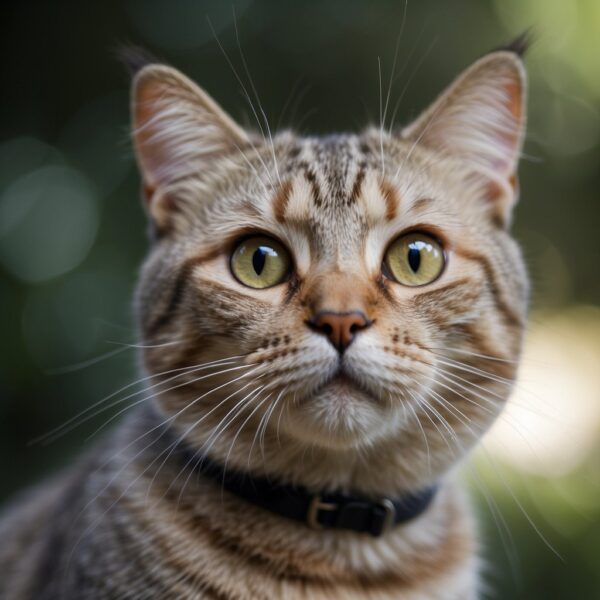
The cat’s vestibular system precisely interprets the information from the inner ear’s receptors about head position and motion, communicating with the brain to keep the animal aligned with gravity and stabilized during movement.
Common Vestibular Disorders in Cats
The vestibular system in cats is essential for maintaining balance, and when it’s impaired, the effects can be disorienting and distressing for the animal. This section explores the primary disorders that affect the feline vestibular system, each with its unique causes and manifestations.
Vestibular Disease
Vestibular disease in cats manifests through a range of symptoms, including head tilting, uncoordinated movement, and nystagmus (rapid eye movement). The idiopathic vestibular syndrome is particularly noteworthy as a common cause; it appears suddenly without a known cause and may resolve without treatment. Cats may also experience vestibular disease from infectious sources or as a secondary symptom to other systemic conditions.
Infections and Inflammatory Diseases
Infections, whether bacterial or feline infectious peritonitis (FIP), can lead to vestibular disease. An inflammation that impacts the vestibular apparatus can cause significant distress. Ear infections, particularly those affecting the middle or inner ear (otitis media or otitis interna), are frequent infectious causes. Inflammation caused by polyps or growths can also interfere with normal vestibular function.
Tumors and Growths
Cats may develop tumors or growths, such as polyps or cysts, within their ears or in areas that affect the vestibular system. These could be benign or malignant, with cancer being a possible, though less common, cause of vestibular disturbances. The presence of such tumors can pressure structures within the vestibular system, contributing to balance issues and abnormal head positions.
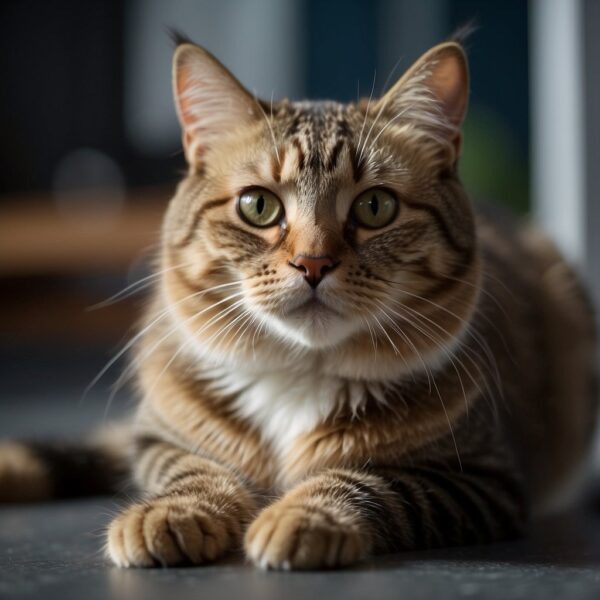
Symptoms and Clinical Signs of cat vestibular issues
Understanding the symptoms and clinical signs of vestibular issues in cats is essential for early detection and management. These indicators can broadly be categorized into behavioral clues and physical manifestations.
Behavioural Indicators
Cats experiencing vestibular dysfunction may display several behavioral changes. Circling is a common sign; affected cats often move in circles, typically towards the side of the lesion. Ataxia, or lack of muscle coordination, may also be observed, which can lead to falling or stumbling. Cats might exhibit nausea which, in conjunction with the vestibular condition, can lead to vomiting.
Physical Manifestations
The physical signs of a vestibular disorder can be quite distinct. A prevalent symptom is a head tilt, where the head is inclined toward the affected side. Nystagmus, an involuntary rhythmic movement of the eyes, typically horizontal, is another notable symptom. In severe cases, cats may show facial drooping if the disease affects certain nerves. Incoordination and a lack of balance and coordination further characterize the physical ailments, as the cat struggles to orient itself in space.
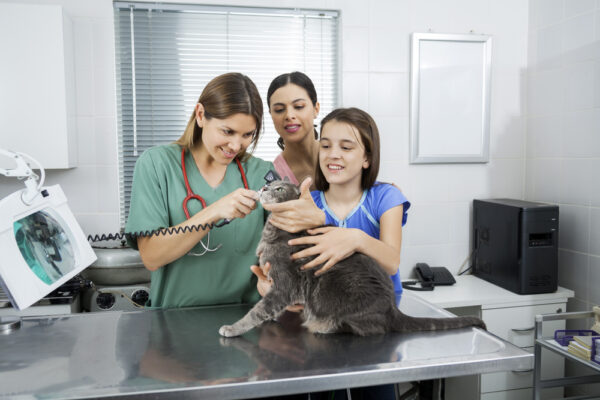
Diagnostic Procedures for cat vestibular system
The diagnosis of vestibular disease in cats involves a systematic approach that includes physical and neurological assessments, as well as advanced diagnostic imaging and laboratory tests. These procedures are critical to differentiate between peripheral and central causes of vestibular dysfunction.
Physical and Neurological Examinations
A physical exam is the first step in diagnosing vestibular issues in cats. This includes observing the cat’s posture, gait, and head position for any signs of imbalance or disorientation. Subsequently, a neurological exam is performed to assess cranial nerve function, since the vestibular system involves several cranial nerves. Particular attention is paid to the eyes for nystagmus, which is an involuntary, rhythmic oscillation that can indicate a vestibular problem.
Imaging and Lab Tests
Advanced imaging techniques like CT (Computed Tomography) scans and MRI (Magnetic Resonance Imaging) are instrumental in diagnosing vestibular disorders, allowing veterinarians to obtain detailed visualization of the inner ear and brain. These tools can help distinguish between peripheral and central causes of the disease.
- CT scan: Helpful in viewing bony structures of the inner ear.
- MRI: Provides superior soft tissue contrast, making it ideal for identifying inflammation, infection, or tumors in the brain.
Additional lab tests typically include:
- Blood work: Essential to rule out systemic conditions that may affect balance.
- Urine tests: Used to assess the overall health of the cat and rule out metabolic causes of vestibular symptoms.
- Spinal fluid analysis: Sometimes necessary to diagnose central vestibular disease.
- Ear cultures and cytology: These can detect infections that may contribute to peripheral vestibular dysfunction.
These diagnostic tools, when used in combination, facilitate a thorough evaluation of the vestibular system and aid in determining the best course of treatment for affected cats.
Treatment Strategies
Effective management of vestibular disorders in cats integrates pharmacological interventions, support measures, and potential surgical procedures, each contributing to an improved prognosis.
Medication and Drug Therapy
Medication plays a pivotal role in treating vestibular dysfunction. Antibiotics may be prescribed if a bacterial infection is the underlying cause of vestibular symptoms. Anti-nausea medication is commonly used to address symptoms of nausea that can accompany vestibular disorders. Drugs such as betahistine dihydrochloride have been shown to facilitate vestibular compensation by improving blood flow to the affected areas.
Supportive and Rehabilitative Care
Supportive care is crucial for a cat’s recovery, involving assisted feeding if the cat is unable to eat independently due to nausea or lack of balance. Rehabilitative care, including physical therapy, can help a feline patient regain balance and coordination as part of the recovery process. Specific exercises are tailored to stimulate the vestibular system and encourage neural adaptation.
Surgical Interventions
Surgery may be considered for cases where vestibular disorders are caused by tumors or other structural abnormalities not responsive to medication. The decision for surgical intervention depends on the cat’s overall health, the location of the problem, and the risk of complications. Post-operative care is significant to manage any toxicity and support the cat’s return to normal function.
Considerations for Specific Breeds
In the context of cat vestibular system disorders, certain breeds exhibit specific considerations. For instance, the Siamese and Burmese cats have shown a predisposition to inherited forms of vestibular disease.
Siamese and Burmese Cats
Siamese and Burmese breeds are particularly noteworthy due to their genetic predisposition to congenital vestibular disorders. Studies indicate that these breeds may exhibit symptoms of vestibular dysfunction early in life due to inherited conditions.
- Siamese Cats: These cats are known for their distinct personality and striking appearance. They may also be genetically predisposed to vestibular disorders, often congenital in nature.
- Burmese Cats: Like the Siamese, Burmese cats can inherit a tendency toward vestibular issues. It is important for breeders to be aware of this when developing breeding programs to minimize the risk of propagating these conditions.
Management of Vestibular Symptoms in Cats
Effective management of vestibular symptoms in cats is crucial for their recovery and long-term health. The focus is on stabilizing their condition, minimizing motion sickness, and enhancing their coordination abilities through supportive care and treatment strategies.
Home Care
For cats experiencing vestibular syndrome, home care plays a vital role in their recovery process. Owners are advised to create a safe environment to prevent injury from loss of balance. Key elements of home care include:
- Minimizing Stress: Cats should be kept in a quiet, comfortable space to reduce stress and prevent unnecessary movement that could lead to falls.
- Assistance with Feeding and Hydration: They might require help with food and water intake, especially if coordination issues are present. Using raised bowls can make eating and drinking easier.
- Preventing Motion Sickness: Medications may be prescribed by a veterinarian to help alleviate nausea and motion sickness, which are common in vestibular cases.
- Close Monitoring: Owners should closely monitor their cat’s ability to urinate and defecate, as well as changes in the vestibular symptoms.
Long-Term Outlook
The prognosis for cats with vestibular syndrome largely depends on the underlying cause, but many cats experience a full recovery with proper management.
- Recovery Timeframe: While some cats may show improvement within 48-72 hours, full recovery can take weeks to months.
- Medical Follow-up: Regular veterinary check-ups are essential to monitor progress and adjust treatment as needed.
- Prevention: Ongoing management, including regular health screenings, can help with early detection and prevention of potential underlying causes of vestibular disturbances.
Proper management and attentive care can significantly aid in a cat’s recovery from vestibular symptoms, leading to a positive long-term prognosis.
Understanding Cat Vestibular Disease Causes
The causes of vestibular disease in cats vary widely and can range from genetic predispositions to environmental factors and physical trauma. Understanding these causes is vital for effective diagnosis and management of the condition.
Environmental and Genetic Factors
Cats may be predisposed to vestibular diseases due to genetic factors that affect the central or peripheral vestibular system. Idiopathic vestibular disease, which is a common cause, occurs without a known reason but may have unseen environmental or genetic triggers. Exposure to toxins or parasites in the environment can also contribute to vestibular dysfunction. For example, certain drugs or chemicals can be ototoxic, adversely affecting the cat’s vestibular apparatus.
Injury and Trauma Related Causes
Physical injuries, such as head trauma, can lead to vestibular disorders, especially if the lower areas of the brain or the inner ear are affected. Trauma can result in inflammation or damage to the vestibular system, which can be acute or may manifest symptoms slowly over time. In some instances, infection or inflammatory causes, including fungal infections, can lead to symptoms that mimic vestibular disease, as they can cause direct or secondary damage to the vestibular apparatus or to the nerve pathways within the central nervous system. Moreover, events such as a stroke may disrupt blood flow to the central vestibular system, leading to balance issues and disorientation.
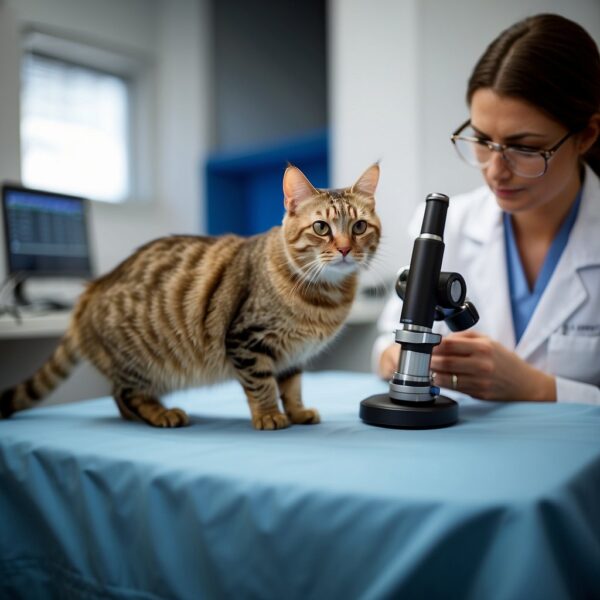
Role of the Veterinarian
In the context of feline vestibular disorders, veterinarians play a crucial role in diagnosis and management. They ensure that cats receive timely and appropriate care, from regular check-ups to emergency interventions.
Regular Check-Ups
Veterinarians are pivotal in identifying early signs of vestibular diseases during regular check-ups. By obtaining a comprehensive medical history and conducting a thorough physical examination, they can detect subtle signs of vestibular dysfunction. It is during these visits that a vet may notice early indicators such as difficulty standing up or a slight rolling motion that the cat’s owner may not have observed.
- Medical History: Vet reviews past health records to identify any underlying conditions that might impact the vestibular system.
- Physical Examination: Assessment includes observing the cat’s posture, gait, and reflexes, which can reveal vestibular irregularities.
Emergency Care
When a cat presents with acute symptoms of vestibular disease, such as severe difficulty standing up or continuous rolling, emergency care by a veterinarian is essential.
- Diagnosis: The vet conducts spatial orientation tests and other assessments to diagnose the cause of vestibular dysfunction.
- Treatment: Immediate interventions may include administering medications to reduce symptoms, providing fluids for hydration, and stabilizing the cat’s condition.
- Prognosis: After stabilization, the vet will communicate the prognosis to the owner, offering a realistic expectation of recovery based on the diagnosis and response to initial treatments.
Advancements in Veterinary Neurology
Veterinary neurology has seen substantial advancements, particularly in the diagnosis and treatment of feline vestibular diseases. Advanced imaging techniques such as Magnetic Resonance Imaging (MRI) and Computed Tomography (CT scans) have become vital tools for veterinarians. These modalities offer precise visualization of the brain and inner ear, areas integral to the vestibular system.
Veterinarians now harness MRI and CT scans to distinguish between central and peripheral causes of vestibular dysfunction. Central vestibular disease originates in the brain, while peripheral disease affects structures outside the brain, such as the inner ear. The level of detail provided by these imaging techniques allows for more accurate diagnoses and tailored treatments.
The neurological exam remains a cornerstone in assessing feline vestibular health. It includes a thorough evaluation of mental status, gait, reflexes, and cranial nerve function. Veterinarians are trained to detect subtle signs that might indicate a vestibular disturbance.
- Imaging Advancements: Technique Application MRI Detailed brain imaging CT Scan High-resolution imaging of the inner ear
- Diagnostic Approach:
- MRI: Essential for evaluating neurological structures, identifying tumors, inflammatory diseases, and more.
- CT Scan: Excel at imaging the bony labyrinth of the inner ear, often affected in vestibular disorders.
These advances in veterinary neurology have revolutionized how vets approach neurological abnormalities in cats, enhancing their ability to diagnose and treat these complex conditions with greater precision and success.
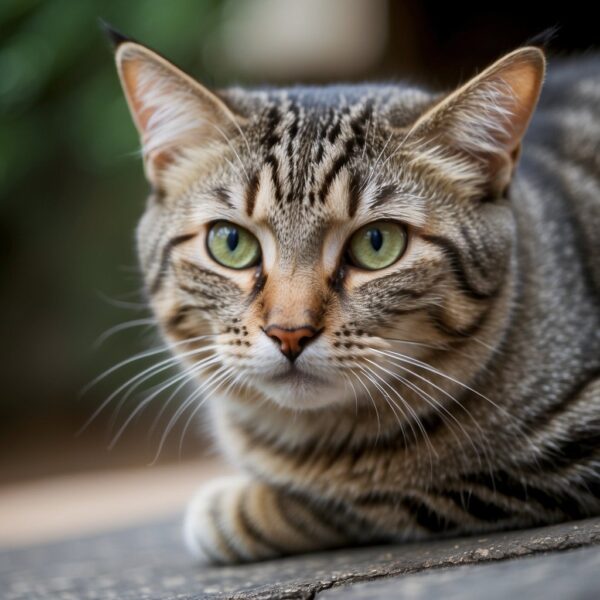
Frequently Asked Questions
This section addresses common inquiries regarding the vestibular disease in cats, including symptoms, treatment options, and care recommendations.
What are the common symptoms of vestibular disease in cats?
Cats with vestibular disease often display head tilting, unsteadiness, circling movements, involuntary eye movements known as nystagmus, and potential nausea or vomiting.
How can vestibular disease in cats be treated?
Treatment typically involves managing the underlying cause, if identified, and symptomatic relief including anti-nausea medication and maintaining hydration.
Are there home remedies effective for managing feline vestibular disease?
While professional veterinary care is necessary for accurate diagnosis and treatment, at home, keeping the cat comfortable and safe from injury due to disorientation may help as supportive care.
What are potential toxins that could cause vestibular disease in cats?
Certain antibiotics, such as streptomycin, are known to affect the vestibular system in cats. Exposure to other toxins, such as heavy metals or certain plants, can also result in vestibular disturbances.
What care strategies are recommended for feeding a cat with vestibular disease?
Feeding a cat with vestibular disease may require patience and making the food easily accessible by placing it at head level to avoid neck movement that could induce nausea.
How long do symptoms of vestibular syndrome typically persist in cats?
The duration of symptoms varies but often acute symptoms may improve within a few days to weeks, though some residual effects can linger or result in a permanent head tilt in some cases.